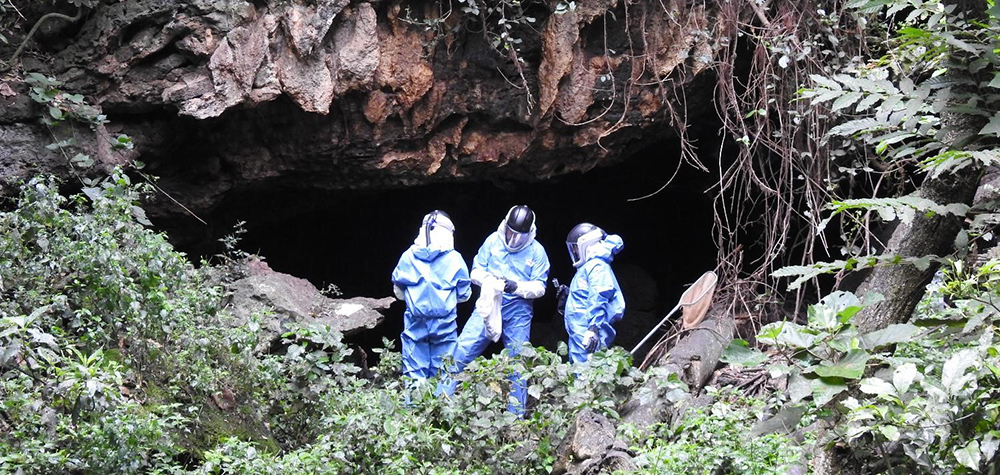Into the Petri Dish
When he's not netting bats or conducting a field lab, Amman (center) makes sure that those on his team understand how to keep the equipment running, as at this site in Uganda. Photo courtesy Amman/CDC.
Tracking Marburg Hemorrhagic Fever to Its Source
3.3.2020 by Toni Salama
In 2007, Texas Tech University alumnus Brian Amman (PhD Zoology, 2005) and his research group solved a 40-year-old mystery by discovering the natural reservoir, or source, of Marburg hemorrhagic fever, a virus even deadlier than Ebola.
Amman is an ecologist with the Viral Special Pathogens Branch, Virus Host Ecology Unit, at the Atlanta-based Centers for Disease Control and Prevention (CDC), an arm of the U.S. Department of Health & Human Services. His research group tracked Marburg's reservoir to the bats that were roosting in a Ugandan mine and, later, in Python Cave in Uganda's Queen Elizabeth National Park.
Marburg virus is shed through bodily fluids including urine and oral secretions from the host mammal, Amman found; that's how humans contract the virus from bats. People may come into contact with oral secretions by eating fruit that a bat already has nibbled, for instance, or by brushing against surfaces where a bat has urinated.
It's important to know the range where these bats fly at night so local populations can be warned. That means Amman and his team must catch the animals and fit them with tiny tracking devices without themselves getting bitten, scratched or otherwise encountering infectious fluids.

Amman and his research group tracked the reservoir of Marburg hemorrhagic fever to its source in Uganda's Python Cave. Photo courtesy Amman/CDC.
For this kind of field work, scientists like Amman must wear protective clothing and equipment—including a Tyvek suit, a face shield, thick gloves and a breathing filtration system—when they catch bats and collect samples for further study.
"The suits are like wearing a trash bag, they're so hot," Amman says. And the discomfort is only amplified by the temperatures and humidity of sub-Saharan Africa, where Amman and other CDC biologists often work.
When they return to Atlanta, the job of research continues through laboratory experiments, analyzing data from test results, writing research papers and building presentations to share their findings.
![]()
College of Arts & Sciences
-
Address
Texas Tech University, Box 41034, Lubbock, TX 79409-1034 -
Phone
806.742.3831 -
Email
arts-and-sciences@ttu.edu
